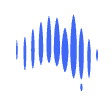Date: Monday 23 October and Tuesday 24 October 2017
Location: Level 1 Lecture Theatre, Australian Hearing Hub, Macquarie University
Please register by 18 October 2017 to Rosemary.Eliott@mq.edu.au
Binaural hearing, particularly the ability to detect small differences in the timing of sounds at the two ears (interaural time differences, ITDs) underpins the ability to localize sound sources, and is important for decoding complex spatial listening environments into separate objects – a critical factor in “cocktail-party listening”. The relevance of binaural hearing to communication in every-day listening situations is increasingly recognized in therapeutic interventions; for example, children born deaf now receive bilateral cochlear implants.
Despite its importance in key listening tasks, however, brain mechanisms responsible for spatial listening remain poorly understood (certainly compared with visual spatial processing), and the potential benefits of binaural hearing for users of hearing aids and cochlear implants slow to be realized. Establishing how binaural hearing is generated in the auditory brain is a key goal of scientists, engineers and clinicians encompassing disciplines as diverse as acoustics and cognitive science.
This two-day workshop brings together global leaders in the field of binaural and spatial hearing—spanning expertise in human spatial listening, brain-imaging techniques for assessing binaural performance, animal physiology & neural modelling, and therapeutic interventions such as bilateral cochlear implantation—to discuss the state-of-the-art and the way forward if we are to understand how the brain generates a sense of auditory space, and how that spatial processing might be restored in individuals with hearing problems.
Program – Day 1 – Monday 23 October 2017
| 0915-0930 | Registration |
| 0930-0945 | David McAlpine, Macquarie University Welcome, Introduction, Overview |
| 0945-1015 | Mathias Dietz, The University of Western Ontario Missing MSO hypothesis in case of electric stimulation |
| 1015-1035 | Jaime Undurraga Lucero, Macquarie University Neural representation of interaural time differences in the human brain |
| 1035-1055 | Jorg Buchholz, Macquarie University, National Acoustic Laboratories More realistic assessment of spatial benefits provided by bilateral cochlear implants |
| 1055-1120 | Morning Tea/Coffee |
| 1120-1150 | Daniel Tollin, University of Colorado The binaural interaction component (BIC) of the auditory brainstem response (ABR) – an electrophysiological biomarker of binaural and spatial hearing |
| 1150-1220 | David McAlpine, Macquarie University Cortical representation of interaural time differences |
| 1220-1240 | Joaquin Valderrama, Macquarie University, National Acoustic Laboratories Auditory brainstem responses from apical portions of the cochlea evoked by a basilar membrane resonance induced by fast stimulus rates |
| 1240-1345 | Lunch – Level 3 Terrace |
| 1345-1415 | MEG Laboratories Tour for invited speakers |
| 1415-1500 | Cochlear Limited Tour for invited speakers |
| 1500-1530 | Michael Pecka, Ludwig-Maximilian University of Munich Mechanisms of precise input timing in circuits for auditory spatial processing |
| 1530-1600 | Nace Golding, The University of Texas at Austin A duplex code within the medial superior olive |
| 1600-1630 | Afternoon Tea/Coffee |
| 1630-1650 | Nicholas Haywood, Macquarie University Sounds with rapidly changing interaural timing cues: perceived lateralization of binaural beat and noise stimuli |
| 1650-1720 | Constantine Trahiotis, University of Connecticut Health Centre Empirical data and quantitative theoretical analyses revealing essential elements of binaural processing: Experiments employing normal-hearing listeners and listeners with slight hearing loss |
| 1720-1730 | Concluding Remarks – David McAlpine |
Program – Day 2 – Tuesday 24 October 2017
| 0925-0930 | Welcome – David McAlpine |
| 0930-1000 | Richard Stern, Carnegie Mellon University Predicting subjective lateral position, interaural discrimination, and binaural detection using the position-variable model |
| 1000-1030 | Christopher Stecker, Vanderbilt University Assessing cortical representations of auditory space from fMRI sensitivity to binaural cues |
| 1030-1100 | Victor Benichoux, Institut Pasteur A model of the binaural interaction component of the auditory brainstem response |
| 1100-1130 | Morning Tea/Coffee |
| 1130-1150 | Lindsey Van Yper, Macquarie University Objective measures of binaural hearing in bilateral cochlear implant users |
| 1150-1220 | Astrid van Wieringen, KU Leuven The development of language and cognitive abilities in infants with single sided deafness and a cochlear implant |
| 1220-1250 | Torsten Marquardt, University College London Perceptual weighting of conflicting interaural timing difference cues in stimulus envelope and fine structure |
| 1250-1430 | Lunch – Level 3 Terrace |
| 1430-1500 | Nicholas Lesica, University College London The neural basis of spatial unmasking of multiple talkers |
| 1500-1530 | Adrian KC Lee, University of Washington Behavioral and neurophysiological evidence regarding the influence of oculomotor circuitry on auditory spatial tasks |
| 1530-1600 | Afternoon Tea/Coffee |
| 1600-1620 | Heivet Hernandez-Perez, Macquarie University Effects of speech intelligibility on the auditory efferent activity |
| 1620-1650 | Steven Colburn, Boston University Human processing of target speech signals in multiple-source environments |
| 1650-1700 | Closing Remarks – David McAlpine |





